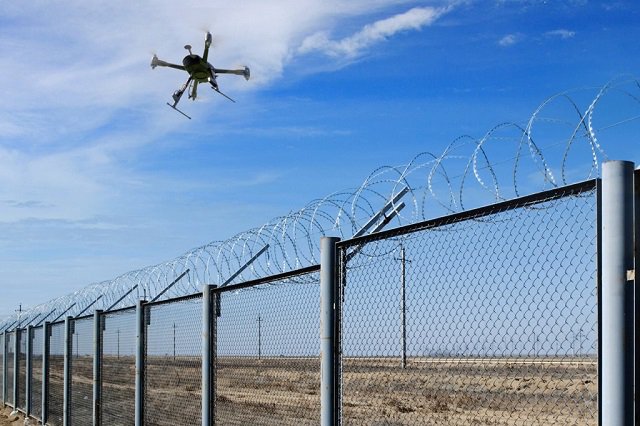
Marke “Hoot” Gibson, the deputy administrator of the Federal Aviation Administration, said two of the biggest issues facing the FAA related to unmanned aviation systems, or drones, are privacy and preemption.
Gibson, a retired Air Force major general, was hired as the senior FAA advisor on UAS integration. U.S. Rep. Frank LoBiondo, who introduced Gibson at the 2016 UAS Conference, Oct. 13-14, said the FAA had to be dragged kicking and screaming into attempting to integrate drones into U.S. airspace. At the same time, he said the best thing the FAA did was Gibson to take on the issue.
Gibson and LoBiondo were keynote speakers at the conference sponsored by Cape May County, the Delaware River and Bay Authority, the city of Cape May, and the Association for Unmanned Vehicle Systems International (AUVSI).
Gibson said the FAA is not in the business of dealing with privacy, but there is a long history of case law dealing with traditional aviation.
“However, it has generally dealt with noise and airports —this is personal use— it comes right in your back yard,” he said, referring to unmanned aircraft.
Gibson said the preemption issue is one that might have to be settled in the courts. Local and state governments across the nation have attempted to regulate drones within their borders. For instance, Ocean City last year restricted drones with an ordinance, but FAA rules released this year seemed to override that. During an earlier panel discussion at the UAS Conference, panelists commented on state regulation, which ranged from very restrictive to simply making reference to FAA regulations. Jonathon Hauenschild, director of the American Legislative Exchange Council (ALEC) Task Force on Communications and Technology, said there have been more than 750 bills introduced in the 50 states in an attempt to regulate drones, but none have been passed or signed by the governor. He said the top trends of state law have been privacy or surveillance related, or related to using UAS as aids to hunting.
“Three states have really good laws,” Hauenschild said.
He said Arizona, Virginia, and Maryland have enacted laws that say local municipalities are prohibited from banning UAS. He said these states have enacted legislation saying the state will follow federal law, and prohibit the reckless operation of UAS. New Jersey was not among the states mentioned as having introduced UAS legislation, but Hauenschild said information on other state laws can be found at alec.org.
Gibson said it was the FAA’s job to regulate airspace, which now includes more and more drones. He referred to UAS as the wave of the future, likening it to the development of the jet engine. Gibson said it is going to be a process of developing operating rules, which will progress from low risk, isolated UAS flights, to full UAS integration in airspace.
On June 21, the US Department of Transportation and FAA announced new rules for UAS flights, known as Part 107. The rules, which affect both commercial and recreational users, allow:
- Visual line-of-sight flying only,
- Daylight or civil twilight (the brightest portion of twilight) only,
- No operations over people,
- UAS operators must yield to manned aircraft,
- Only one UAS per operator,
- UAS may fly at a maximum ground speed of 100 mph, and…
- Flying with external loads is only permitted if the load does not interfere with the operations or control of the UAS.
“A lot of what Part 107 addresses are new (FAA) regulations,” Gibson said, adding that the rules were formulated after receiving 10,000 comments from the public.
Gibson said anyone who complies with the regulations may now legally operate a drone, however, users are now required to register their UAS with the FAA (http://federaldroneregistration.com/). The registration fee is $5.
Gibson said the word the FAA wants to get out to hobbyists who, essentially “want to fly their kite,” should know they are flying in airspace used by manned aircraft. Gibson also highlighted what the FAA has labeled the “Micro Rule,” which prohibits operating UAS over people. He said the initial thought was the rule would apply to a lower weight class of UAS, but the FAA is continuing to define the rules for larger UAS, which he said would be out before the beginning of 2017.
Gibson also addressed the FAA’s integration strategy, which is a long process between isolated flights and full integration of UAS into the airspace.
“High altitude integration is the next big phase of regulation,” Gibson said.
Gibson said there are many manned aircraft that could be converted as UAS and used commercially. He said before they get to full integration the regulations will have to address issues such as flying beyond the line of sight and flying UAS at night.
Source: shorenewstoday.com
